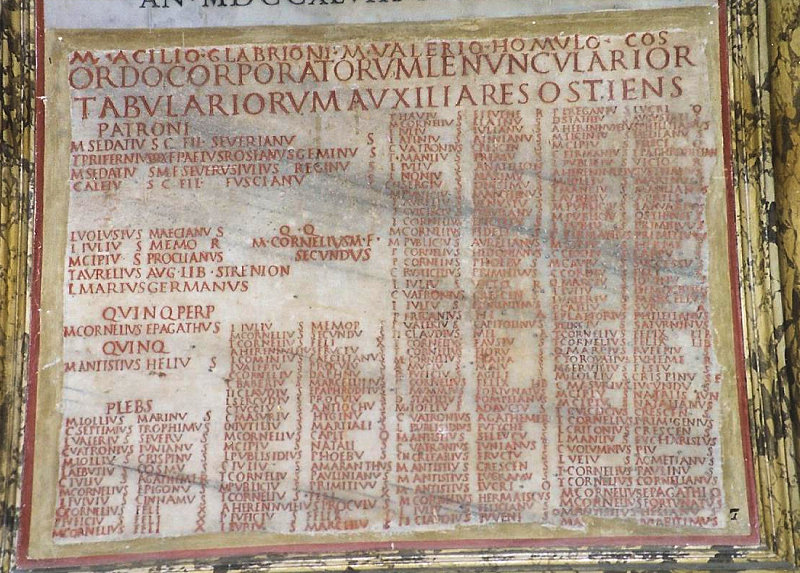Isola Sacra - The Portus to Ostia canal
The dominant feature located by the geophysical surveys is a wide canal, running from north to south, from the Fossa Traiana in the north towards the mouth of the Tiber in the south. At the north end the canal was spanned by a bridge. The canal was dug at the end of the first or the beginning of the second century AD, most likely in the Trajanic period. The canal was no longer used from the end of the second and the beginning of the third century AD.
The canal seems to be a continuation of the so-called Canale Romano to the north of the Fossa Traiana, to the east and south of the hexagonal basin at Portus. The southern end of the canal has not been understood fully yet. The situation is obscured by the constantly moving coastline and riverbanks at the river mouth. The canal was either connected to the Tiber opposite Ostia, or to the sea, with a curve towards the south-west. If it was led to the sea, a bridge may have spanned the canal.
The canal seems to have measured some 90 meters across at the north end and to have narrowed quite significantly as it headed southwards, to 40 meters. However, it may in reality have been between 90 and 40 meters wide: due to the action of the water there was lateral mobility of the canal over the centuries. In the south part the depth of the canal was sufficient for large cargo ships with a draught of up to 5 meters. The north part was shallower (between 2 and 3.5 meters), and could only be used by ships with a smaller draught, which however could still be 150 ton cargo ships.

Map of the Isola Sacra with the canal. Image: Keay et al. 2020, fig. 5.1.
As to the functions of the canal: the banks were not reinforced, and it does not seem to have been flanked by warehouses (only in the northern part are there major structures close to the canal). There were of course goods for which storage in horrea was not practical or not deemed necessary. We may think for example of the wood that was brought to Rome as fuel for the baths. Wooden roofs would offer enough protection. Perhaps such goods were unloaded here from cargo ships and loaded on tow-boats. Several other functions are conceivable. Tow-boats may have moored here, for example in periods when the water table of the Tiber did not allow the journey to Rome. Other small boats that would need a mooring place were all sorts of service ships that were in use within the harbour, such as the auxiliary lenuncularii tabularii. The canal could also have been a holding area for incoming sea-going vessels, waiting to unload. There could have been wharves for repairing and building ships on the banks. The canal may also have been a measure to prevent Tiber flooding. Only excavation will answer all these questions.
 |
|
M(anio) ACILIO GLABRIONE M(arco) VALERIO HOMULO CO(n)S(ulibus) ORDO CORPORATORVM LENVNCVLARIOR(um) TABVLARIORVM AVXILIARES OSTIENS [list of members] |
|
An inscription of the auxiliary lenuncularii tabularii, found in Ostia. Date: 152 AD. Capitoline Museums. EDR158649. Photo: Eric Taylor. |